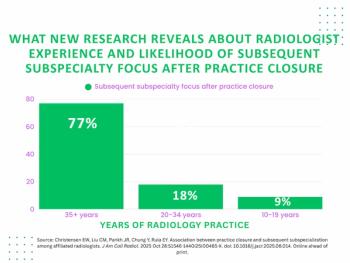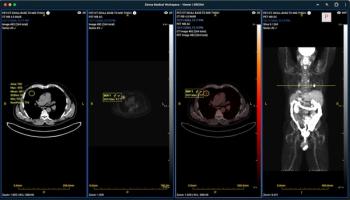
Catch the MLB “FEVER” – Using a New Elbow MRI View for Improved Injury Assessment
A new view with different positioning can allow for better visualization.
Adopting a new view with MRI scans can help providers evaluate the ulnar collateral ligament (UCL) injuries that are common in athletes who throw.
These injuries occur due to extreme valgus stress from repeated overhead throwing patterns. Over time, UCL tears can led to chronic valgus instability, pain, and dysfunction that can require a surgery for repair or reconstruction. In fact, 25 percent of Major League Baseball (MLB) pitchers, as well as 15 percent of minor league pitchers, suffer these injuries. However, standard positioning for an elbow MRI does not always offer clarity on valgus stress.
In a study published June 4 in the
“The increased joint space width confirms elbow valgus stress with FEVER view,” said corresponding author Thomas Knoblauch, project scientist and director of research at Imgen. “Diagnostic confidence increased, and additional UCLs were identified as abnormal.”
Knoblauch piloted the study, along with Gary Waslewski, M.D., team physician for the Arizona Diamondbacks, and others to specifically measure how FEVER impacts the ulnotrochlear (UT) joint space. For their study, they conducted elbow 3T MRI scans on 44 major league baseball pitchers, average age 23, including standard sequences, as well as a coronal fat-saturated proton density-weighted sequence in the FEVER view.
For the FEVER view, trained technologists positioned the pitchers in a specific way, detailed in the study, that immobilized the elbow and produced valgus stress. This allowed for visualization of the UCL parallel to its long axis. Two radiologists, then, independently evaluated the standard and FEVER views to measure UT joint space.
Based on the provider assessments, the team determined that the FEVER view leads to greater diagnostic confidence.
“Among 44 MLB pitchers undergoing elbow MRI,” they said, “the FEVER view, compared with standard view, yielded increased UT joint space width and increased confidence for three of five UCL-related findings.”
Specifically, they said, the mean increase in UT joint spaces was 1.80 mm, and the mean increased confidence was -0.14 to 0.98. In addition, the team determined that both readers classified three UCLs as abnormal on both standard and FEVER view, but they caught two additional abnormal UCLs with FEVER.
“The FEVER view on MRI is intended to provide reproducible elbow valgus stress, facilitating functional UCL evaluation in throwing athletes,” they said. “Using the FEVER view in our cohort, confidence scores increased for both readers for differentiation of normal versus abnormal UCL, as well as for a range of findings, including intensity of abnormal signal, injury grade, and presence of retraction.”
Although further studies are needed that include larger sample sizes for comparisons with non-throwing elbows, and to assess the clinical, performance, and surgical correlations that can help determine the accuracy and predictive value of the FEVER view.
“The findings support the FEVER view as a practical addition to standard elbow MRI protocols for achieving elbow valgus stress in throwing athletes,” they said, “thereby providing functional information to complement the high-resolution anatomic assessment provided by MRI.”
For more coverage based on industry expert insights and research, subscribe to the Diagnostic Imaging e-Newsletter
Newsletter
Stay at the forefront of radiology with the Diagnostic Imaging newsletter, delivering the latest news, clinical insights, and imaging advancements for today’s radiologists.






























